Follow Up Outgoing
We proactively follow up on reported incidents to ensure satisfactory resolution and gather feedback to continuously improve our services.
Follow-Up Call Flow – Outgoing: Overview
This diagram represents the outgoing follow-up communication process initiated by the AI agent to update a constituent on the status of their previously reported issue. It combines backend queries, status tracking, personalized AI videos, and optional escalation, ensuring timely and multilingual updates for constituents while keeping internal systems synchronized.
The process begins with the AI querying internal records and (optionally) the Work Order System, then reaching out to the constituent with the latest status. Based on the response and current progress, it determines whether a personalized update or escalation is needed, and logs all outcomes.
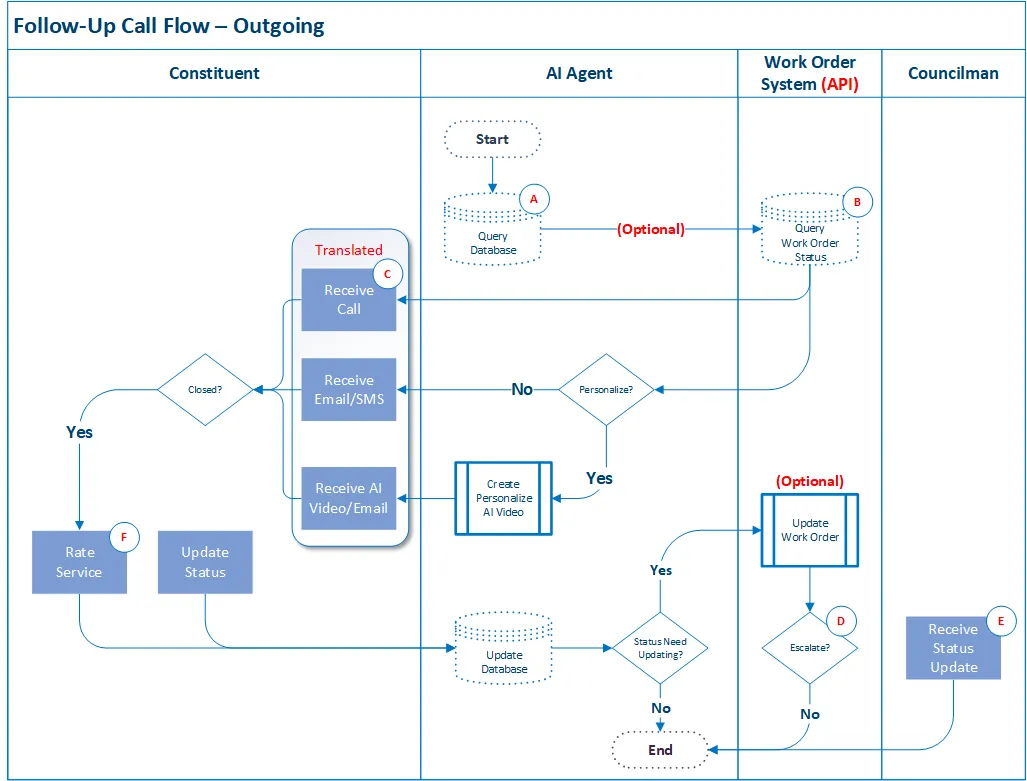
Step-by-Step Analysis of Stages A–F:
Note: All Processes can be modified to meet business requirements
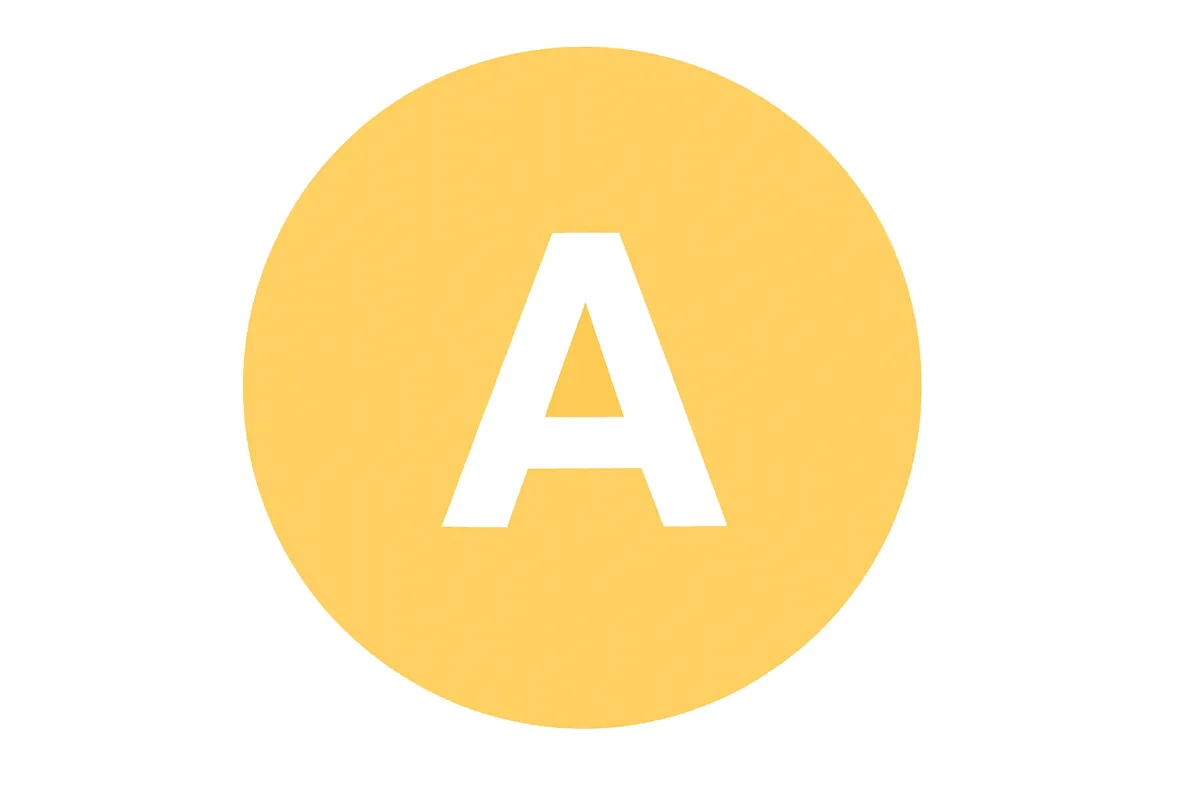
Query Database
What Happens: The AI agent retrieves the constituent’s most recent reported issue from the internal system.
Purpose: To identify which issue needs to be addressed and ensure accurate context for the follow-up.
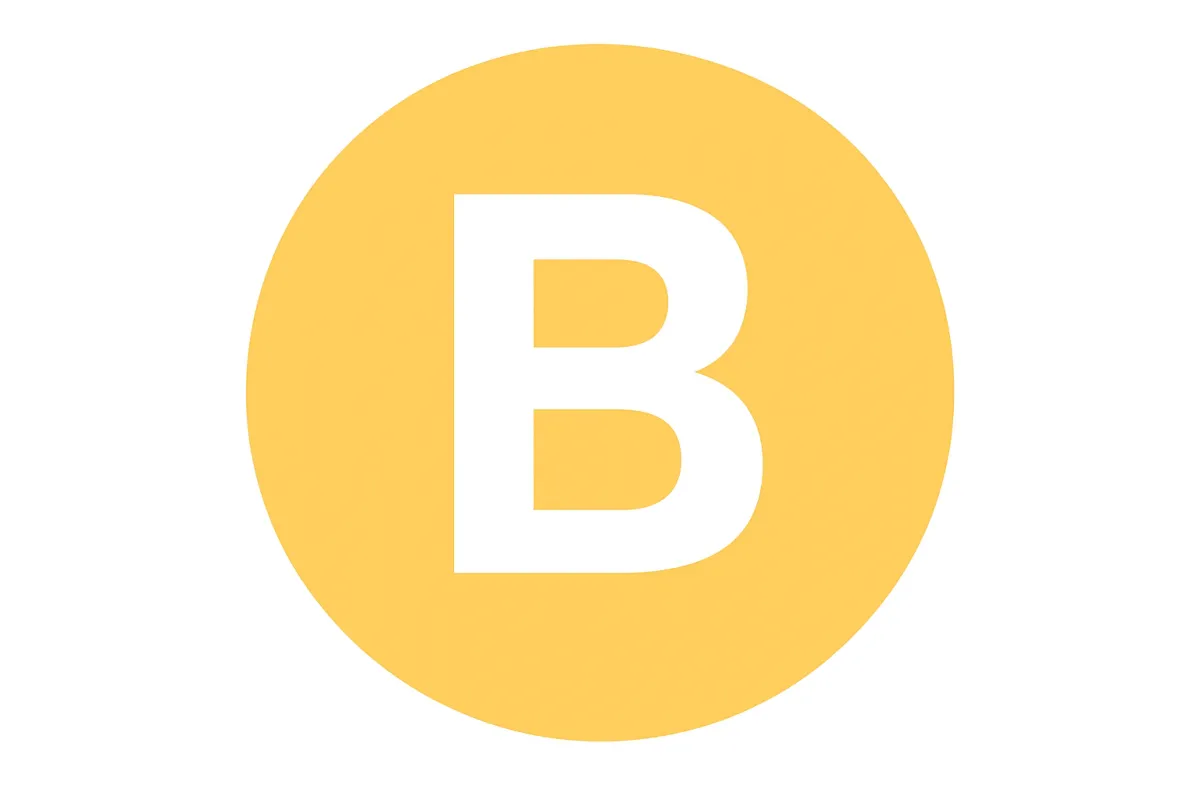
Query Work Order Status
What Happens: The AI connects to the Work Order System via API to get the real-time status of the issue.
Purpose: Ensures the AI gives the most current and accurate update to the constituent.
Optional: Not required if the issue doesn't involve the work order system (e.g., policy feedback).

Receive Call (Translated)
What Happens: The AI contacts the constituent by phone, and possibly follows up via SMS or email with translated messages.
Multilingual: All communication is translated automatically into the constituent’s preferred language.
Purpose: To relay the status update clearly and accessibly.
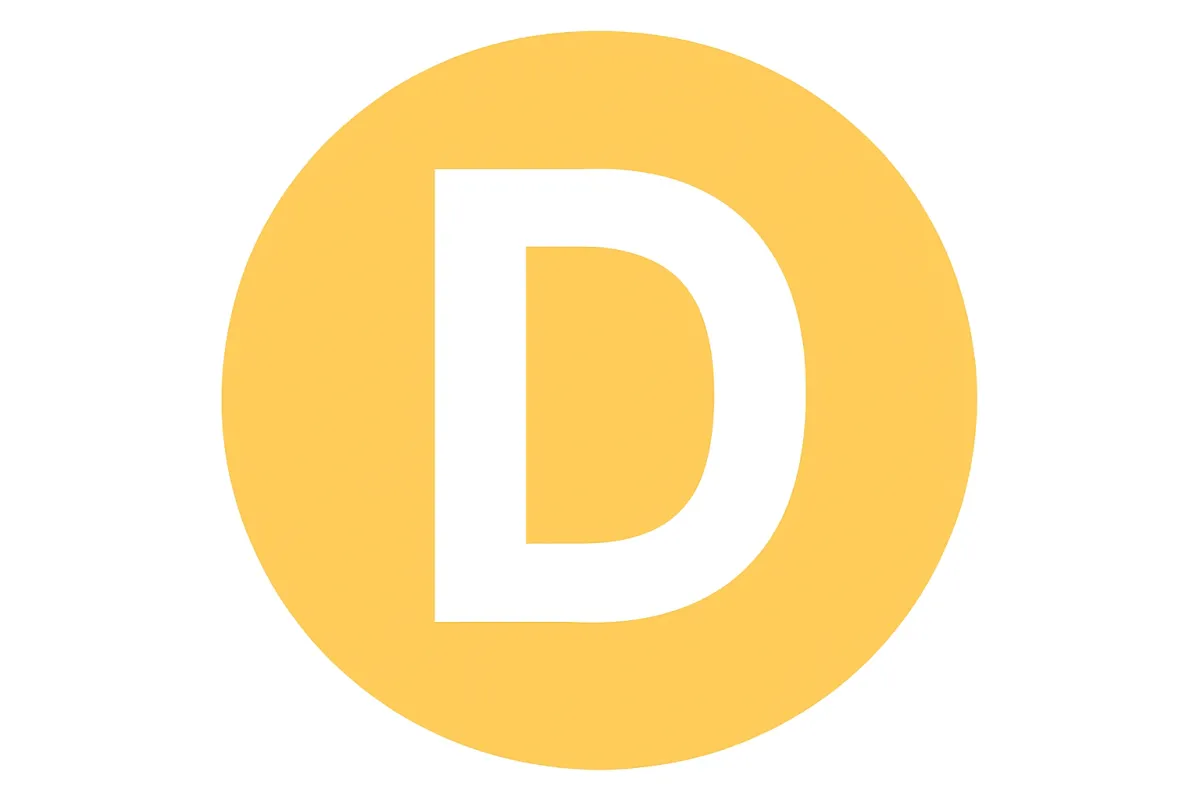
Update Work Order (Optional)
What Happens: If new information is obtained during the follow-up (e.g., issue not resolved), the AI can trigger a work order update.
Escalation Check: If needed, the system can escalate the issue automatically to a higher tier (e.g., supervisor or department head).
Purpose: To ensure unresolved or improperly closed issues don’t go unnoticed.

Receive Status Update
What Happens: The councilman receives a real-time status update reflecting the constituent's current case.
Purpose: Keeps the elected official informed of issue resolution progress and constituent feedback.
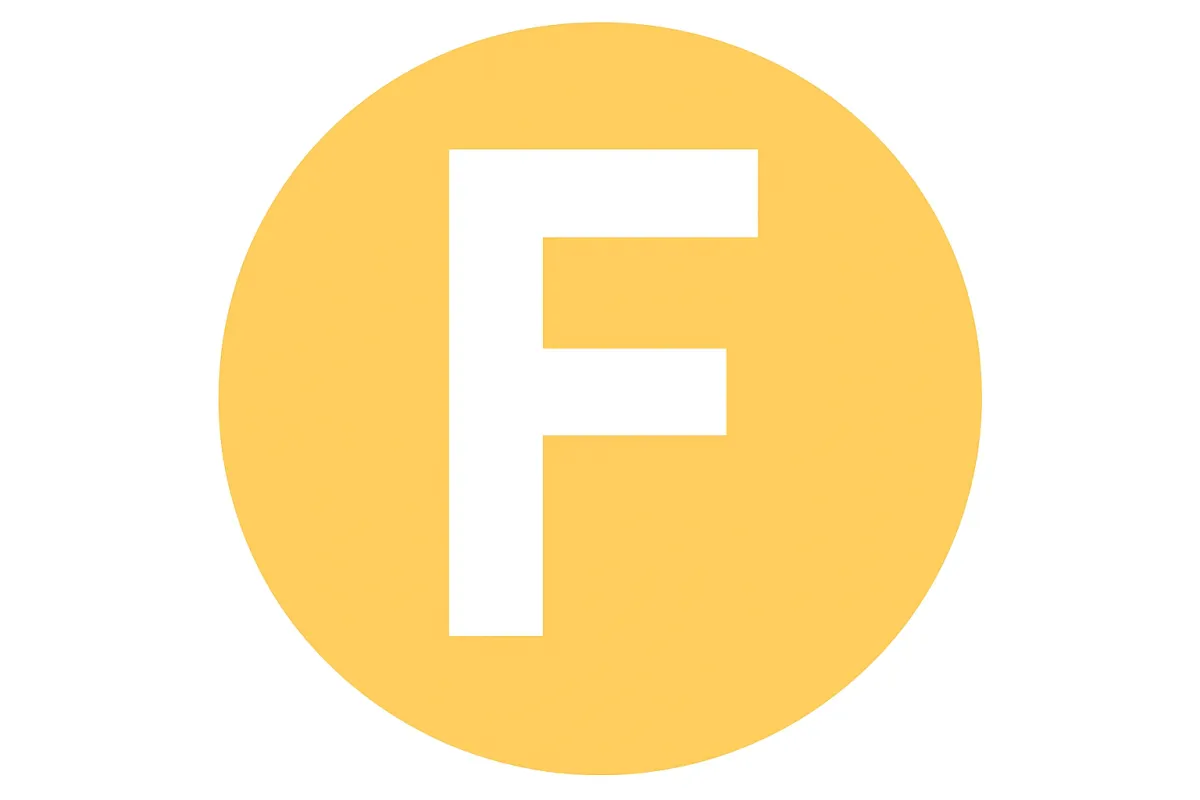
Rate Service
What Happens: If the constituent confirms the issue is closed, the AI asks them to rate the service.
Update Status: The system logs this as a completed task and updates the database accordingly.
Purpose: To measure constituent satisfaction and close the loop.
Key Strengths of the Process:
AI-Initiated Contact: The process begins with proactive outreach by the AI.
Multilingual Communication: All constituent-facing messages are translated.
Personalization: AI can deliver tailored video/email updates if configured.
Escalation Built-In: Ongoing issues are automatically escalated when necessary.
Feedback Loop: Constituents can confirm resolution and rate the experience.

Our Mission:
To empower public servants with intelligent, always-on communication tools that elevate constituent service, reduce administrative burden, and restore trust in government through responsive and reliable AI-powered engagement.
Navigation
Processes
Tools
© 2025 GovServ - All Rights Reserved.
Contact
FAQ
Privacy Policy